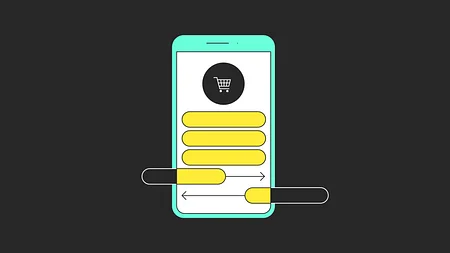Money Management in Africa Part 1

The introduction of new competition-friendly regulations have led to a wave of new market entrants in the form of fintech start-ups. And it’s not just happening in developed markets.
The banking industry is under disruption and in developed markets the fintechs’ focus on changing the banking sector is driven by a need to enhance the customer experience. It coincides with the rise of financial inclusion as a fashionable talking point within the industry.
Globally, 1.7 billion people are unbanked, including approximately 53% of Sub-Saharan Africa’s population. It remains difficult for consumers in this region to open accounts, with stringent acceptance criteria, high recurring costs, and long distances between branches some of the reasons the banking rate is limited.
In the past, end-to-end services across the payments value chain were solely provided by banks, leaving African markets underserved due to the lack of investment and poor infrastructure. Over the past decade, the spotlight on financial exclusion saw most governments and banks put initiatives in place that largely relied on positioning branches and self-service outlets to reach the unbanked. The problem, however, was this was not only costly for the banks but the results were negligible.
The mobile revolution
Capitalising on the new competitive regulatory environment and the fact the banks were making slow to no progress, fintechs were able to discover the gaps in excluded communities in emerging economies.
Enter mobile money, a game changer for financial inclusion when companies came to grips with the fact that fintech could provide a pathway to formal financial access in areas where physical banks could not. The realisation that although few people in developing countries have access to a bank, two-thirds of the unbanked have a mobile phone, opened up new possibilities for the unbanked to access mobile money accounts and other text or app-based financial accounts.
Mobile money has revolutionised the way consumers and small businesses operate in Africa. With over 30 million users worldwide (21 million in Kenya), M-Pesa remains one of the most successful fintech stories in Africa.
M-Pesa quickly gained popularity because it wasn’t just bringing convenience to consumers or replacing another service, it was the only platform that offered banking services in addition to negating the need for ATMs and branches, which were non-existent in some parts.
Prior to mobile money, some retailers were burdened with the task of travelling long distances between various countries owing to the predominantly cash culture across the region. Thanks to fintech, retailers are now able to pay suppliers remotely, shortening the fulfilment time and improving the availability of products.
Deploying fintech is about carrying out specialised functions that other services simply aren’t equipped to handle. This is demonstrated in Zimbabwe, where locals get by without a national currency and rarely have access to physical cash but now heavily rely on mobile money “EcoCash” for all types of payments, from groceries to rent and school fees. In a lot of western countries, fintech services are one option of many, yet in some markets, it is the only option for the masses.
The next wave: bank fintech collaboration
While mobile money is the prominent banking solution in Africa, the landscape is changing and banks are racing to establish their place in a rapidly changing ecosystem. Rather than competing and trying to beat fintechs at their own game, they have, instead, offered fintechs a seat at the table by entering into partnerships or investing in start-ups to expand their digital capabilities.
A prime example is Pan-African Ecobank, which has set up a fintech fellowship program. The bank inducts promising fintech startups with a view to “explore commercial partnerships.” Others include Standard Bank South Africa that acquired SnapScan, a mobile payments provider start-up and Absa (ex-Barclays) known for investing in and working closely with start-ups to improve its own innovation processes.
Digital-only banks are making waves in the UK and Europe. However, only a few have been established in Africa. Standard Chartered launched a digital-only retail bank in Côte d’Ivoire (CDI) in 2018, and is in the process of introducing it to Tanzania, Ghana and Kenya. 2018 also saw Discovery Bank, Tyme Bank and Zero Bank gaining licenses and becoming the first digital-only banks in South Africa.
Incumbents in Africa have an opportunity to deliver innovation internally and increase loyalty by offering their customers market-leading products and services via already widely-used APIs. They can take inspiration from the likes of BBVA and create entire ecosystems of fintech partnerships. Alternatively, they can establish stand-alone digital-only banking units under separate brands, like Mettle.
As with the case in the western markets, money management has become a hot topic among African consumers, following the introduction of PFMs. South African bank, Nedbank, launched the “My Financial Life” PFM tool in response to the growing demand. Apps such as 22SEVEN and Reach are some of the tools across the continent that allows for easy integration of consumer accounts. Start-ups are also starting to invade the savings space, with Nigeria’s piggyvest gaining in popularity as it offers higher interest rates in comparison to incumbents.
Stay tuned for part 2 of this blog where I explore what's next for African fintech and financial services in the region.


